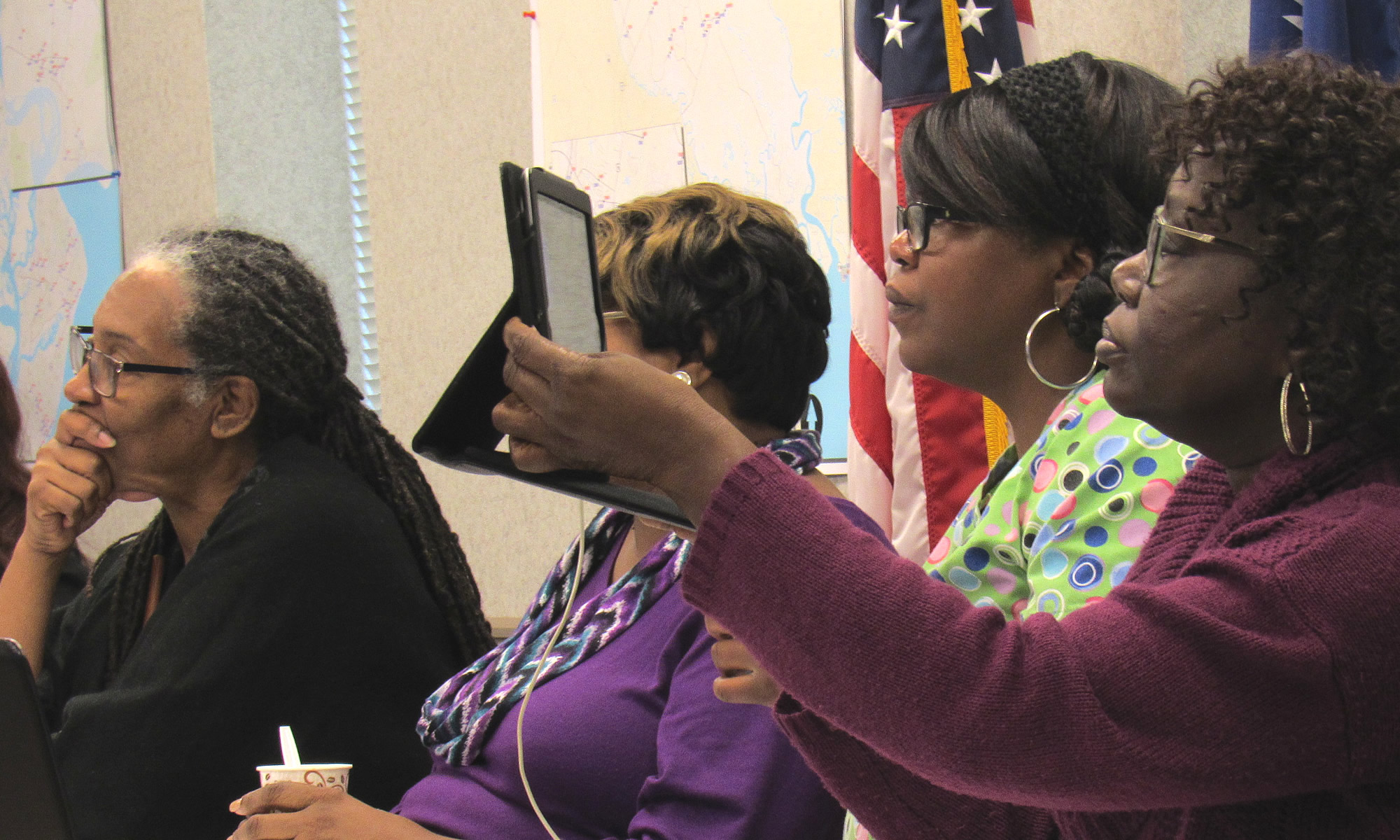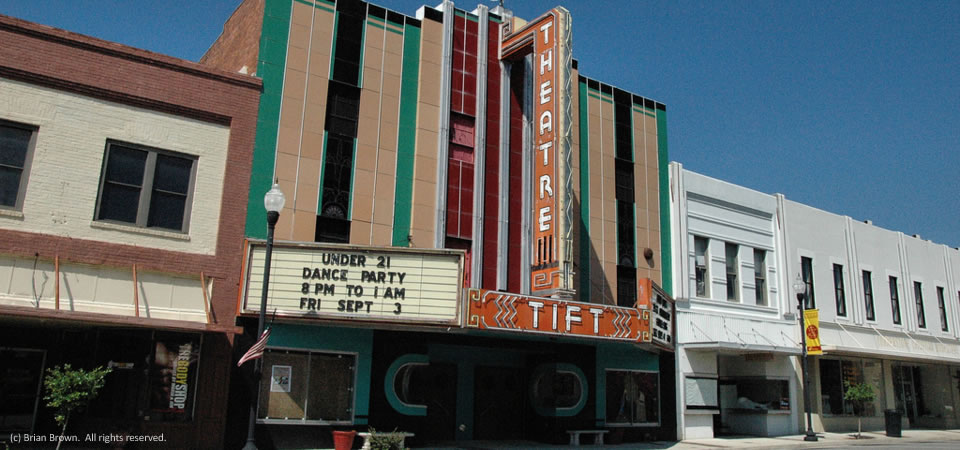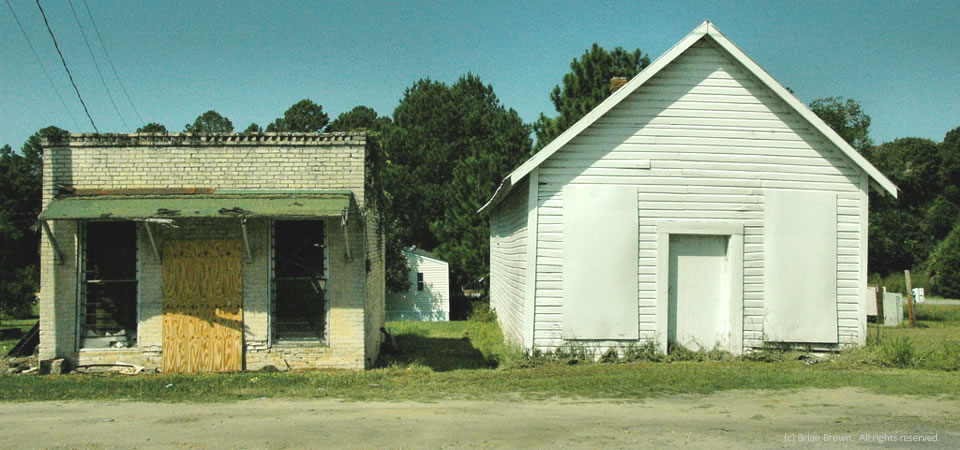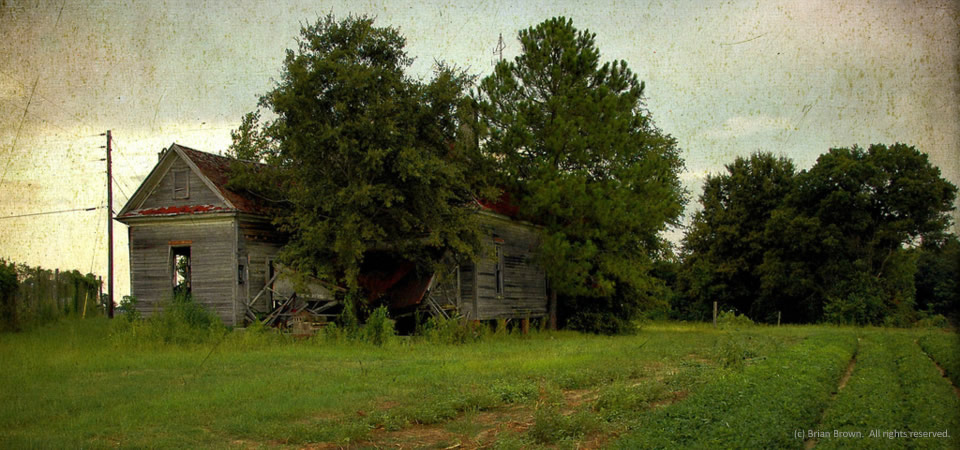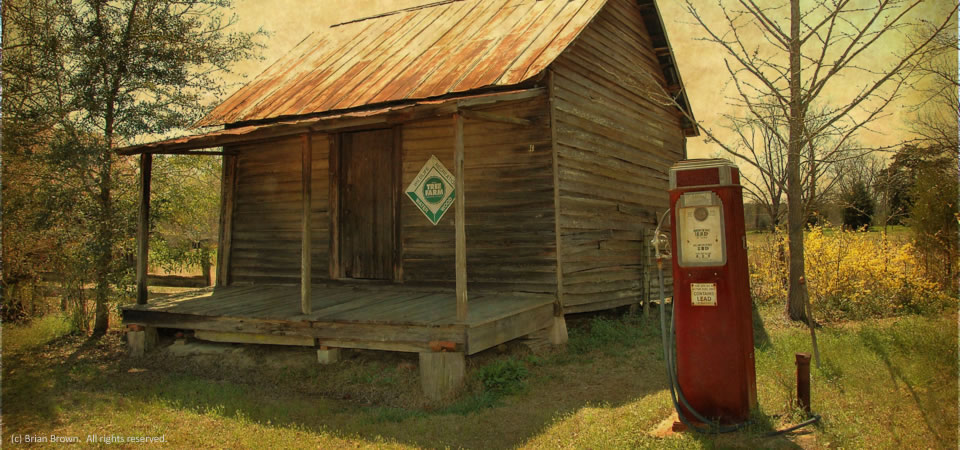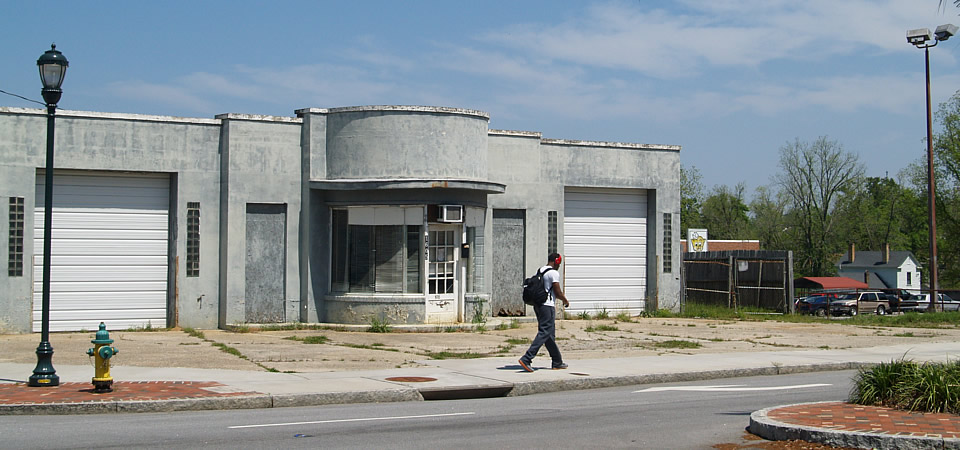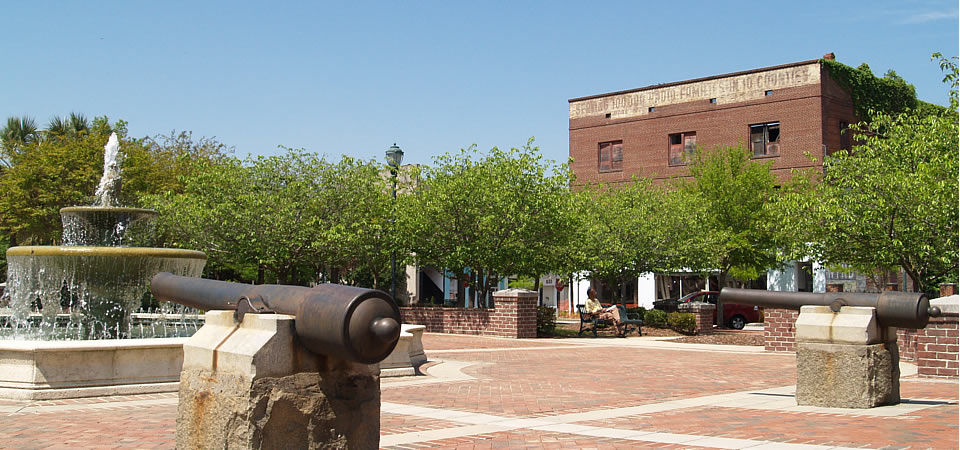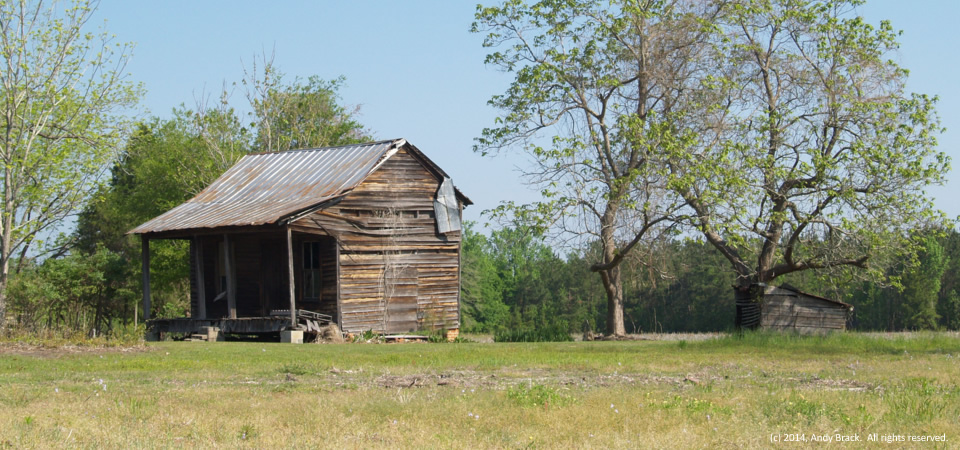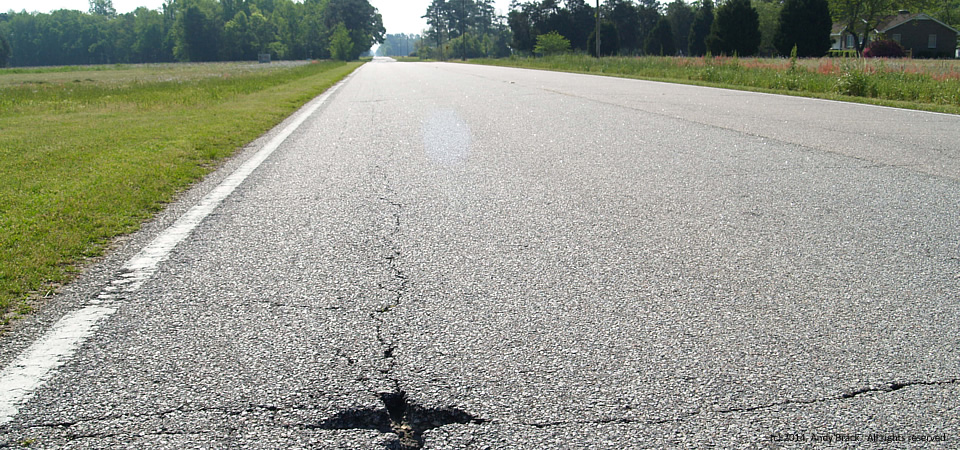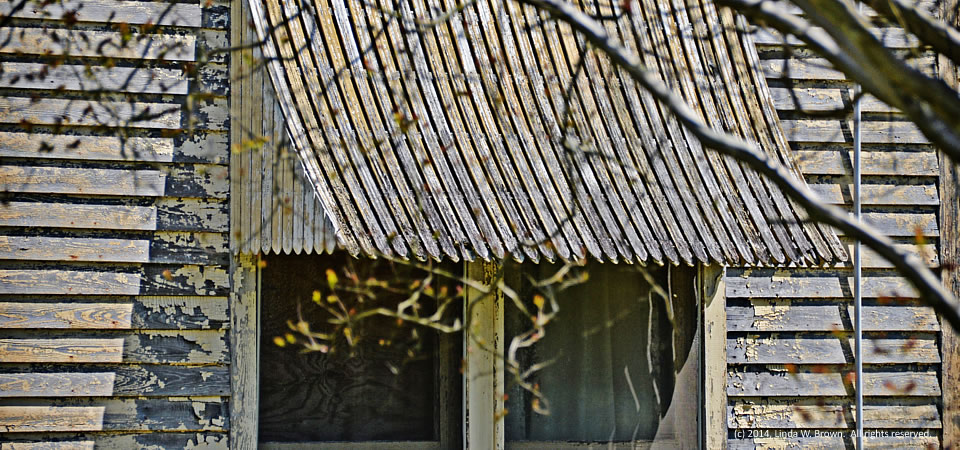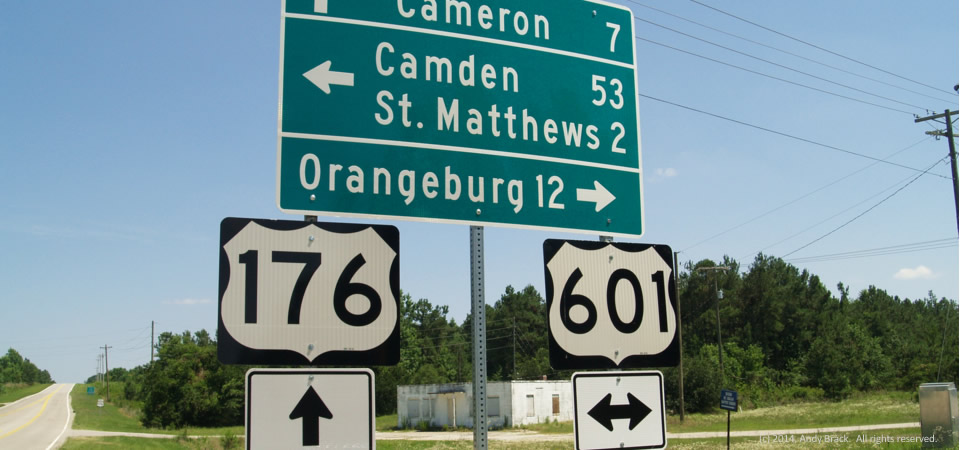
A deserted store is at one corner of an empty intersection in Calhoun County, S.C. Back in the day before Interstate 26, which is a few miles to the south, this place would have been a busy gathering place for local residents and travelers going between Charleston and the state capital city, Columbia.
Much of Calhoun County is very rural, but because part of it abuts the Columbia metro area, its poverty rate is a little lower than most Crescent areas. Poverty is 18.2 percent, according to a five-year Census average, less than a point higher than the state average. The county is, however, relatively small at just over 15,000 people. About 43 percent of residents are black with whites comprising 55 percent.
Photo taken June 18, 2014, by Andy Brack. Copyrighted. All rights reserved.
